A visual gallery from Uzbekistan
In quest for Mughal history and following in the footsteps of Zahir-uddin Babar and his a autobiography, called Waqa-I-Babar(the Urdu translation of which was performed by Prof. Yunus Jafrey,) I undertook exploratory journeys in the years 2000 to 2007 to Uzbekistan, Tajikistan, Kyrgyzstan, Turkmenistan, Afghanistan, Pakistan & India. In year 1483, Zahir-uddin Muhammad Babar, the founder of Mughal empire was born as eldest son of Umar Shiekh Mirza at Andijan in Fergana Valley, which is now in Uzbekistan. We will start our visual gallery with Uzbekistan & in the next write up, we will cover the heritage remnants from cities of Afghanistan, Pakistan & India.
Uzbekistan
The present Uzbekistan & its cities of Bukhara, Samarqand, Khiva, Andijan, Tashqand & Shahrisabz has been a cradle of civilization from the first millennium BC when an extensive irrigation channels were built around these areas. With the growth of silk trade, they became a dominant centers of the trade on the silk route. The region was ruled by Persians, Parthians, & Sassanids. By 08th century, the region of Transoxiana became part of expanding Islamic empire. It became an epicenter of Islamic Golden age where great centers of the learning were established. Many notable scientist of the Islamic Golden age belonged to this region. During 10th century, it became a part of Samanid empire. The centuries of cultural evolution & the great centers of learning bear the brunt of expansion of the Mongols in 13th century & these settlement faced their savagery. By the next century, the region of Uzbekistan was controlled by the descendants of Genghis Khan. In the end of 14th century, the complete region of Transoxania was consolidated by Ameer Timur who later expanded his empire to Iran, Mesopotamia, Asia Minor, & modern Afghanistan. From his war exploits against Sultans of Delhi, Middle Eastern rulers & Ottomans, he brought the artisans, scholars & scientist to his capital at Samarqand. His grandson Ulugh Beg was among one the leading astronomers of the world of his time. By 15th Century, the vast Timurid empire of Transoxania was divided in innumerable principalities among his descendants. Babar’s father Umar Shiekh Mirza got the share of Ferghana Valley as one of the great-great grandson of Ameer Timur. It was from here the Babar’s struggle started when he inherited Ferghana after the death of his father at the age of eleven in 1494. For the next ten years, he struggled fighting his own members of extended Timurids & Chengezids family to whom his mother belonged. It was in 1504, he was able to cross Hindukush mountains & captured Kabul from Arghuns that was seat of his uncle Ulugh Beg II.
Samarqand
Gur-e Ameer is the tomb complex of Ameer Taimur in the city of Samarqand. He is the national hero of today’s Uzbekistan. In Persian he was called Taimurlung, as one of his leg was shorter. That’s why in the English texts he is referred as TamerLane. In central Asia, he is called as Ameer Timur.

This is the grave of Prophets cousin & companion, Hazart Qusam Bin Abbas in Samarqand. He was martyred in the attack of Saeed Bin Uthman Bin Affan & buried here. His tomb complex is popular as Shahe Zinda. Most of the construction in tomb complex was done during 11th century, however some later centuries additions & renovations was also present in the complex.

This is one of the most famous monument of Samrqand that is popular as Registan Square. The term literally means Sandy Palace. On one side is located the famous learning center of Ulugh Beg while on other side Tilya Kari Mosque & Sher Dor Madrasa in the middle. Still down the centuries, this monument gave splendid view to the visitors.
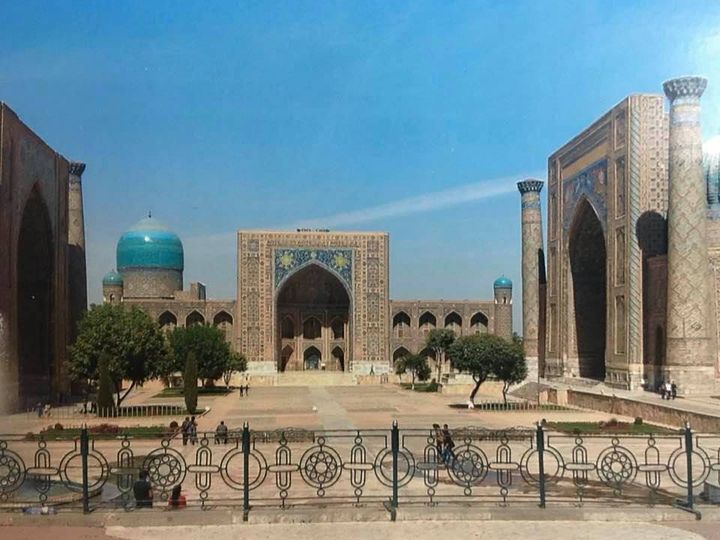
This is the resting place of 09th century theologian & scholar, Abul Mansur Al Matrudi. His appellation Matrudi is derived from Maturid, a locality of Samarqand. He was one of the great pillar who laid the foundation of believes & refuted the work of Mutazilites. He passed away at Samarqand in 944.
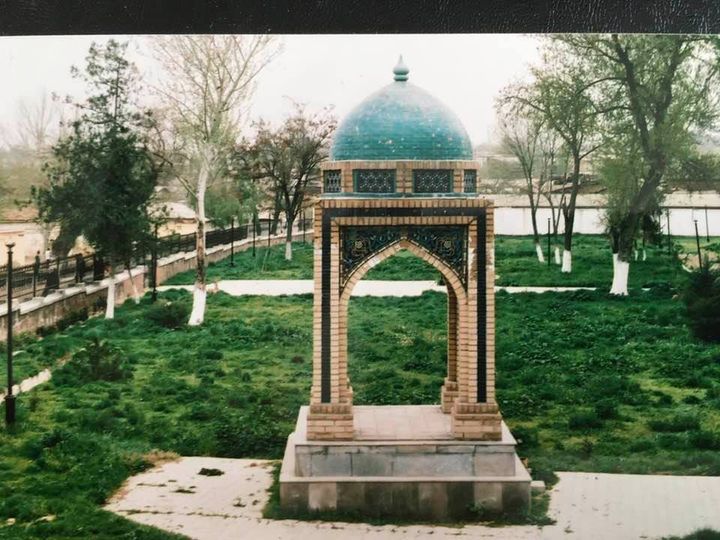
Twenty five kilometers North of Samarqand is the resting place of 09th century scholar of Hadith Muhammad Ibn Ismail Al Bukhari who is also famous as Imam Bukhari. He is known for his great compilation of Hadiths, Sahih Al Bukahri. A treatise where around seven thousand of Hadith were reported after an extensive research done by him. For this he travelled all across the Islamic world to meet the scholars. He passed away in 870 CE.
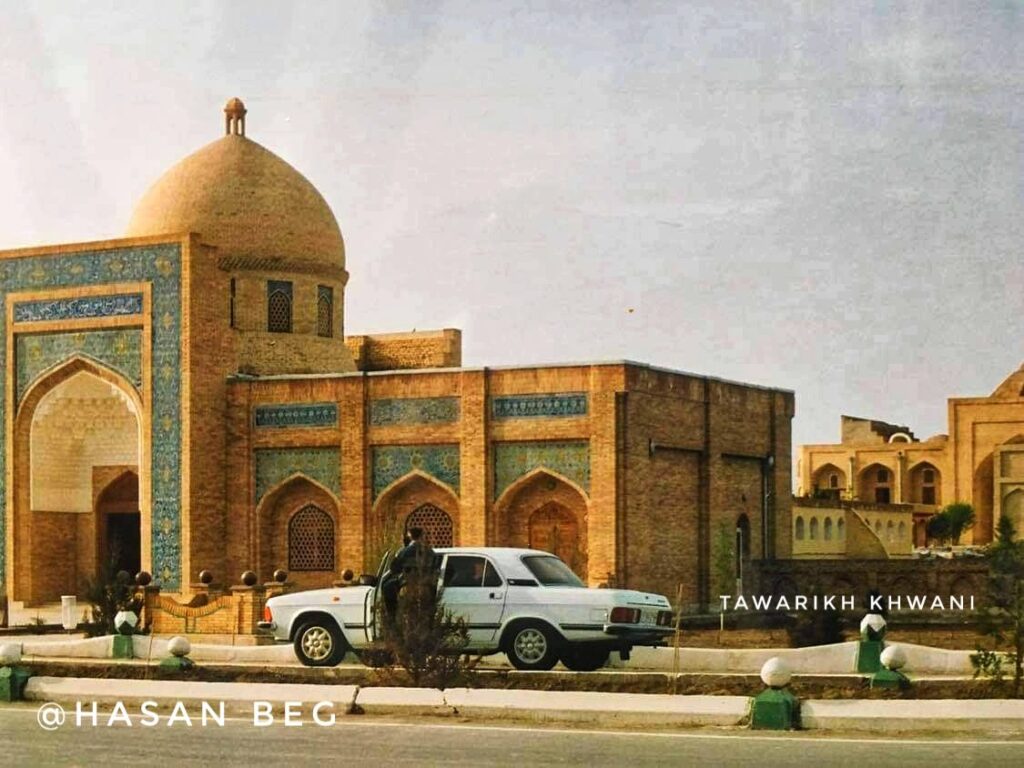
This stone has verses inscribed on it, as mentioned by Babar. It was the tradition in Central Asia that when armies use to stay a place, they left their signs by writing on the stones. Babar himself has done it in kohistan of Messiah. It means, we captured the world with our strength & power but unfortunately on basis of power we couldn’t able to take with us.

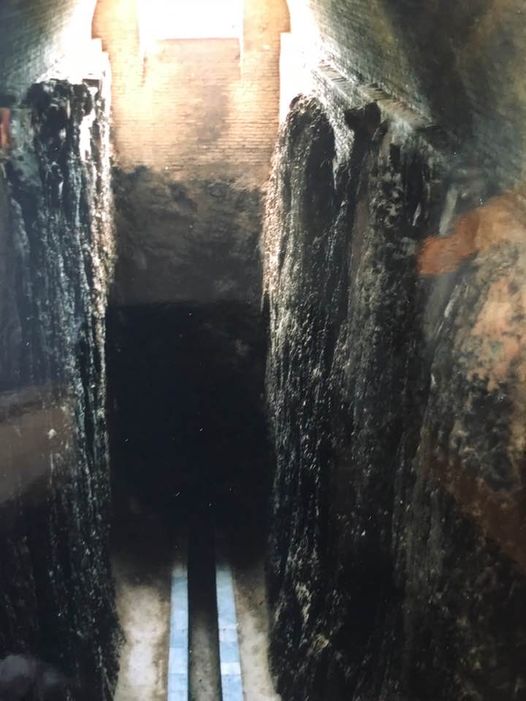

This a view from an observatory built by Ulugh Beg, the grandson of Taimur in 1420. He was the man with inclination towards sciences. From the marble astrolabe that was fixed in observatory, the mathematicians & astronomers used to measure the sun from horizon, altitude of planets & other stars. It was destroyed in 1449 & got buried under the mud. It was again rediscovered by a Russian archeologists.
Tashqand

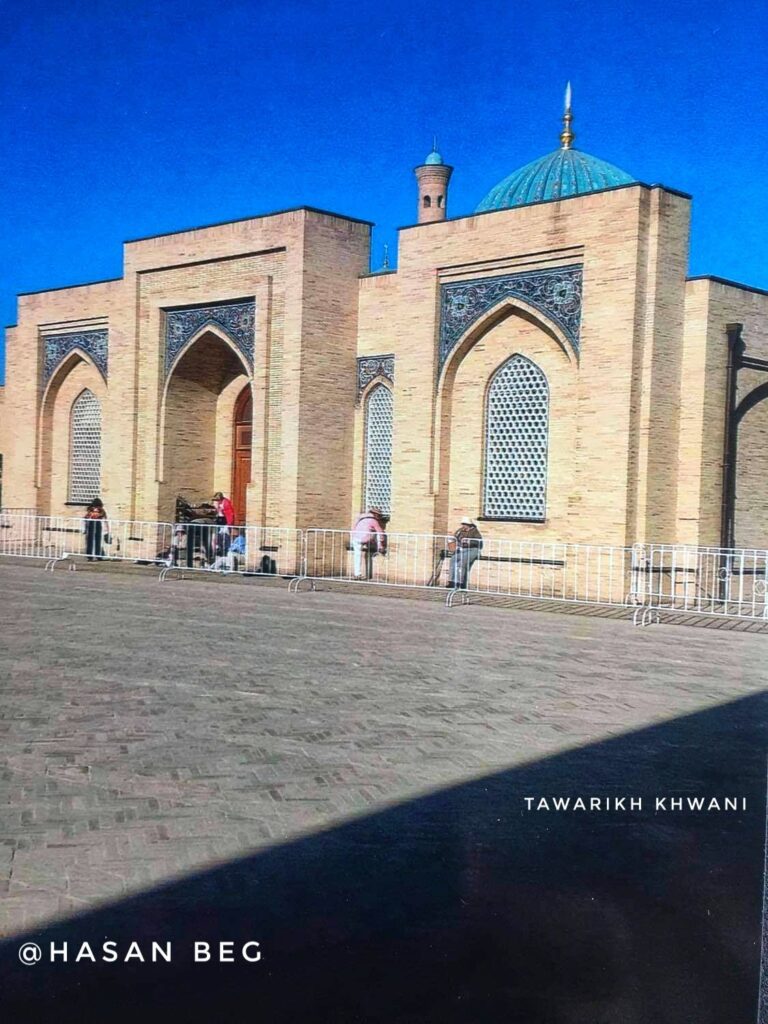
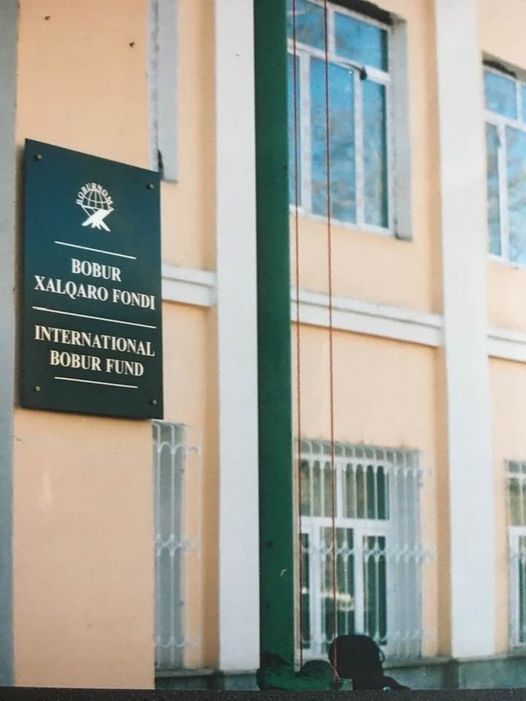
Khwaja Obaidullah Ahrar (1404-1490) was born in a village near Tashqand. He was Naqshbandi Sufi. Babar’s grandfather Abu Saeed Mirza used to walk along his horse as mark of respect. Abu Saeed Mirza implemented several Shariah commandments according to his advice. He played the role of peace maker in the battles between Babar’s father and other relatives. Babar himself was his great follower. To get relief from his illness, he translated his collection of Poetic supplications titled “Risala Valediya” from Persian prose to Turki verse.

Sheher-i-Sabz
This is the city where Emir Timur was born. Its located eighty kilometers south of Samarqand. He was born at a village known as Khwaja Al Ghar.
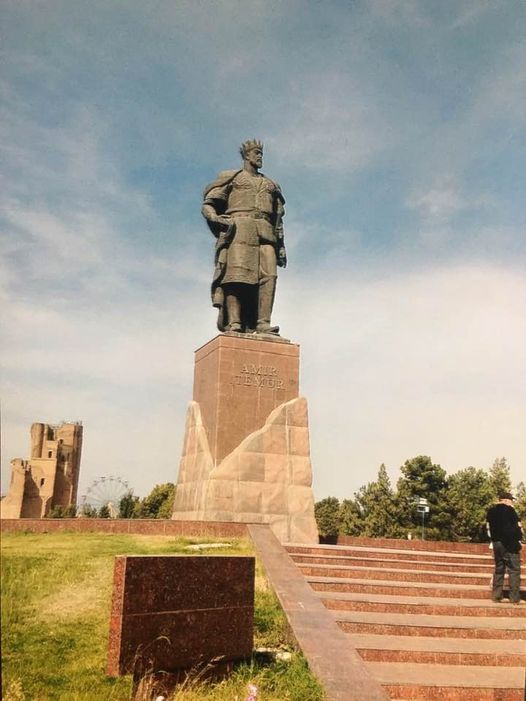
An underground chamber was discovered by Archeologist here in 1943. It seems that he has an intend to be buried here but after death, he was buried at Samarqand.
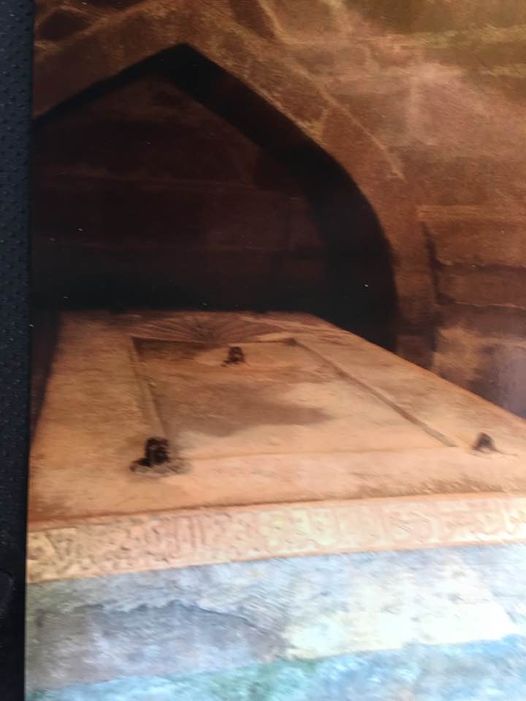
This is another wonderful monument of Shahrisabz. Its a complex that has a Kok-Gumbaz mosque, mausoleums and madrasa. The Kok-Gumbaz mosque (blue dome) is seen from the front in the background; it dates from 1435–1436. In front of the mosque there two mausoleums, including that of the Sufi sheik Shams ad-Din Kulal, the spiritual guide of Emir Taimur and a madrasa (Koranic school). It also include the resting place of his sons, Jahangir & Shahrukh. The buildings were restored in the second half of the 20th century and at the beginning of the year 2000.
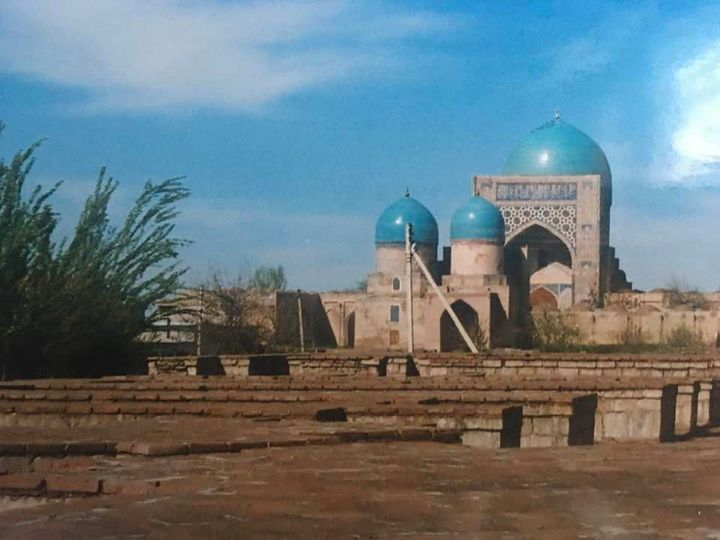
Bukhara
Ark of Bukhara is among one of the oldest heritage monument of this historic city. Its a massive fortress that was first build around 5th century. During Russian incursion in 1920, the monument was heavily damaged by bombardment. An entire township was present in this huge fortress in medieval era. Even there was a rich library in this fortress that was cited by Ibn Sina. Presently it has a mosque that dated from 17th century, museums & a prison called “Zinfandel” is present by its side.
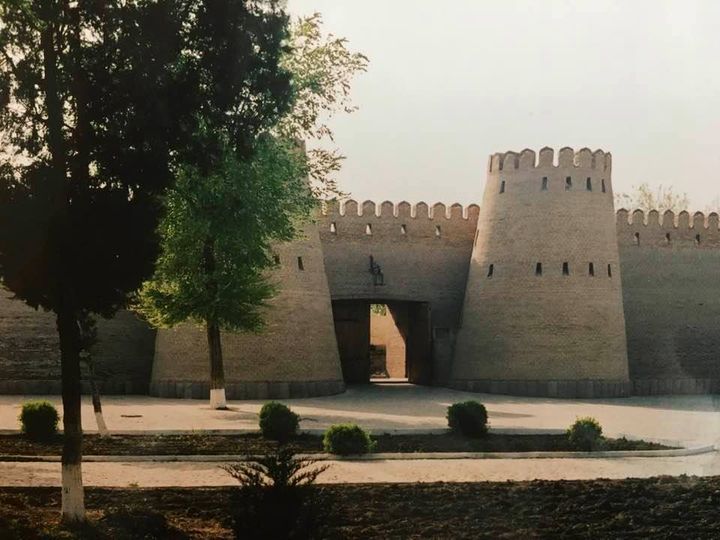
Another landmark monument of this historic city is “ Kalan minar” This was once a mighty monument build by Qarakhanid ruler, Muhammad Arsalan Khan as a part of Kalyan mosque in 1127. This was a time when the city was popular as Bukhara Sharif. In its heydays, it has more than three hundred mosque & madrasas as a great learning center. When the city faced the wrath of Genghis Khan much of its heritage has been damaged but he was astonished to see this forty seven meters minaret & refrained from destroying.
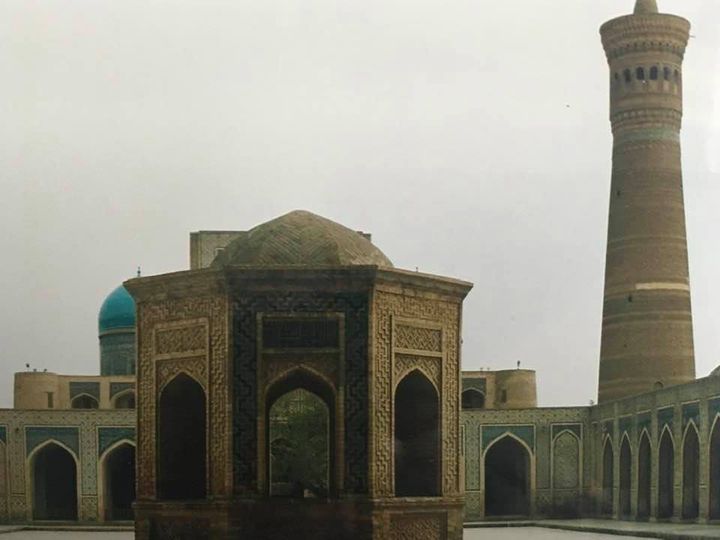
Tomb of Ismail Samnani is a mausoleum complex built in 10th century. Its located in North-West part of Bukhara. The mausoleum has been attributed to Ismail Samani (849-907) who was founder of Samanid dynasty who made Bukhara as their capital. Made up of small bricks, its an iconic monument of early Islamic architecture.

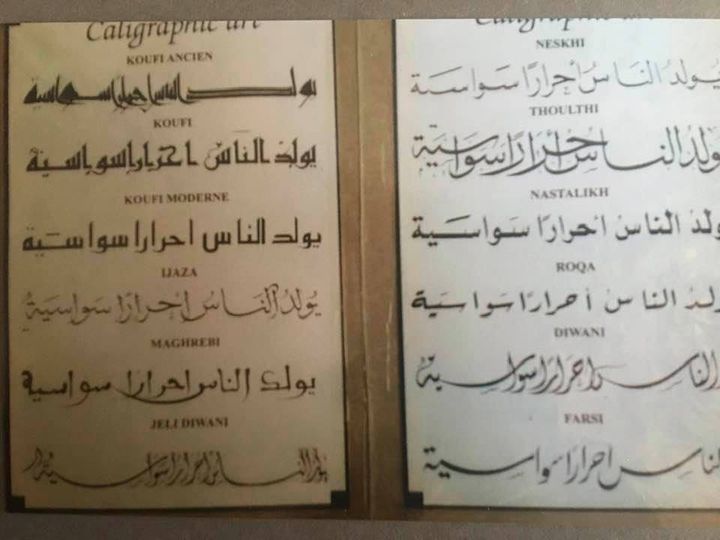
Twelve kilometers away from the Bukhara is the resting place of 14th century Islamic Scholar who is founder of the Naqshbandi order of Sufism. Hazrat Bahauddin lineage goes back to Prophet Muhammad (PBUH) by Imam Hasan Askari. This village Qasre-Irfan is still a popular site for the visitors. Occupationally Naqshband were the people who made the wood blocks that were used to make prints on clothes. Other than following mystic order, the Naqshbandi Sufi order also promote engagement with trade for the livelihood. They led very disciplined life with strict following of Islamic rule. Even with great efforts, the Russian secret service, KGB was not able to plant their agents in Naqshbandi order during 1920s.
Among the many notable residents of Bukhara, the name of Ibn Sina (Avicenna) is one of the prominent in list of medieval polymaths. He was born in 870 CE. His contributions towards the medicine & philosophy is great gift to human sciences. His books, especially Cannon was part of European Medical Curriculum till 17th century.

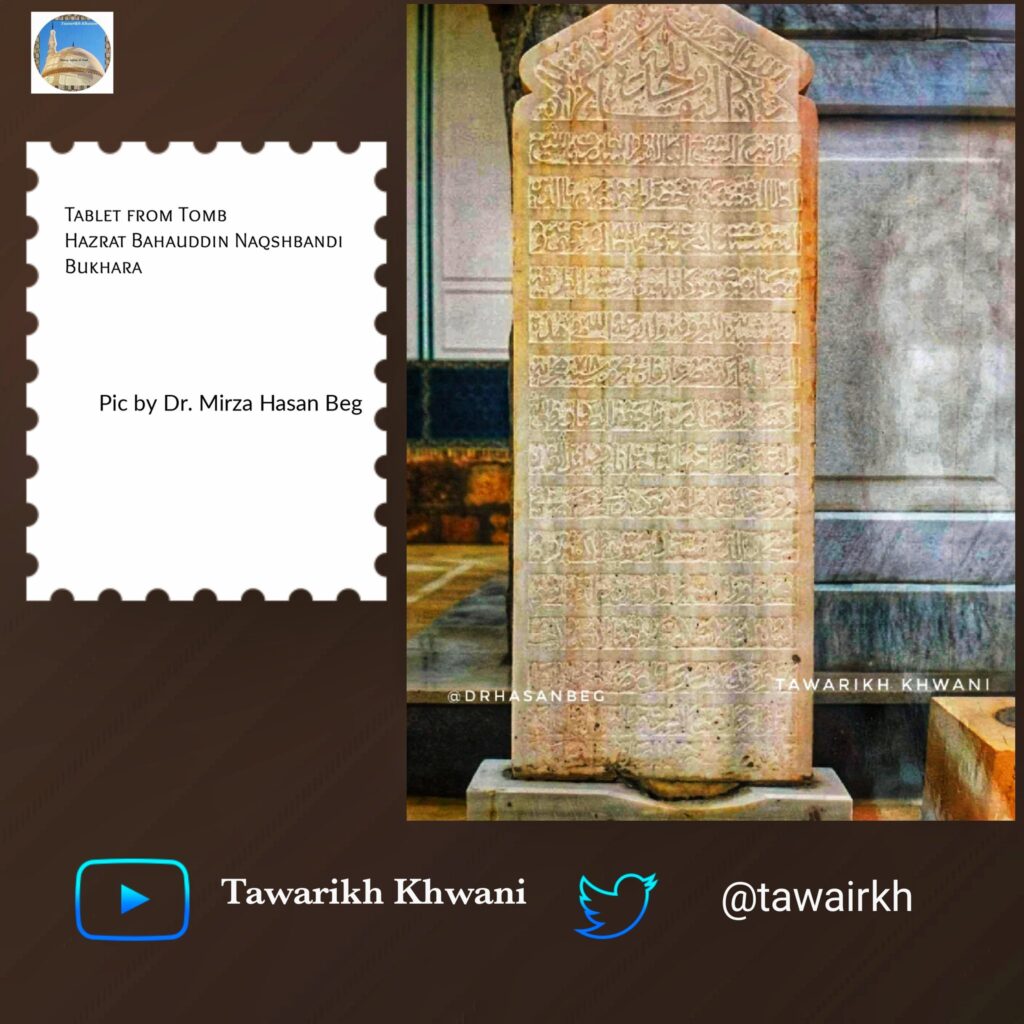
Andijan
This is the capital town of Ferghana valley in Uzbekistan. One among the oldest settlement in the regions, this was one of the important city on silk route. The city is affiliated with the birthplace of Babar, the founder of the Mughal dynasty in India. Babar is considered as one of the national heroes of Uzbekistan. There are three sculptures of Babar present at his birth place. This one is located on the main square of Adinjan. Uzbekistan is also proud of Babar’s poetry and his books. His lyrics are still in media. Musicians sing and the audience enjoys them.
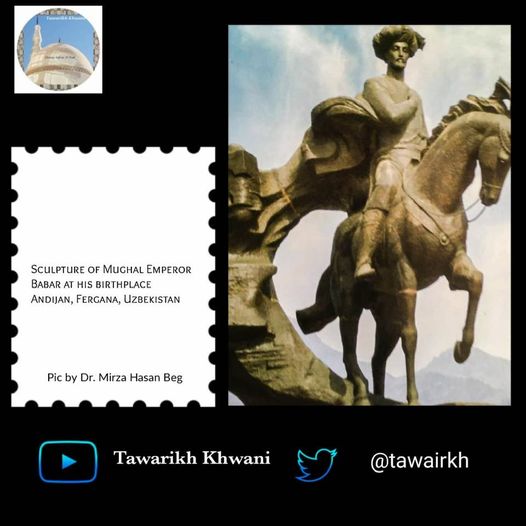
This is the gateway of the Babar’s ancestral haveli at Andijan. Recently it has been renovated. The interior of this haveli has large courtyards, verandas, & rooms. A beautiful engraving has been done on the wooden door.
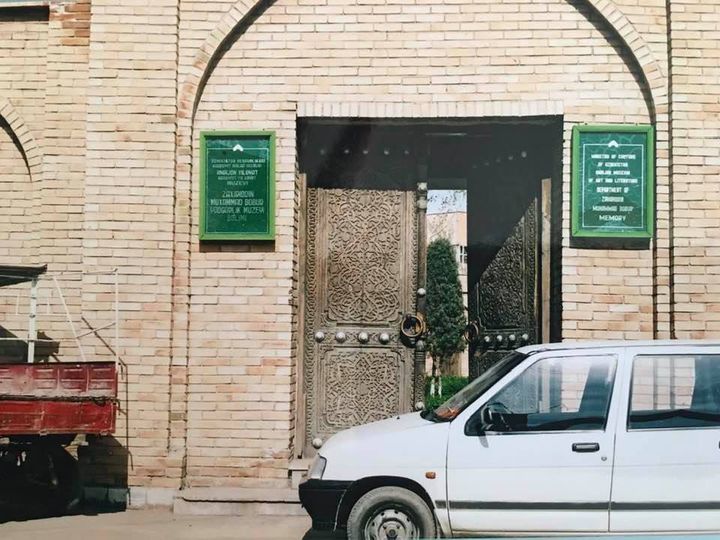
This mud mound is Babar’s Akhsi, nowadays it’s name is Akhsikant, eighteen miles west of Andijan. This was a strong fortress that was the capital of Babar’s father Umar Sheikh Mirza. Babar praises the melons of this place and also mentioned of its White deer that was good for hunting. There was a pigeon house on the side of the castle, from where Umar Sheikh Mirza fell with the pigeon house and his soul left this world. Earthquake destroyed the fort. It is a sight inviting the Archaeological Department to explore.

Khiva
Among the place of antiquities in Central Asia, this city deserves a discussion. The entire city is a museum that has been filled with heritage monuments of different historical layers. It has been believed that the son of Prophet Noah (PBUH), Shem has instilled one well at this place. From that time, the human habitation is present in this city. Located west of Bukhara, it houses innumerable mosques, madrasa, Palaces & old streets. This picture depict a palace of Khan of Khiva. Each of the quarters were residents of the rulers wives.
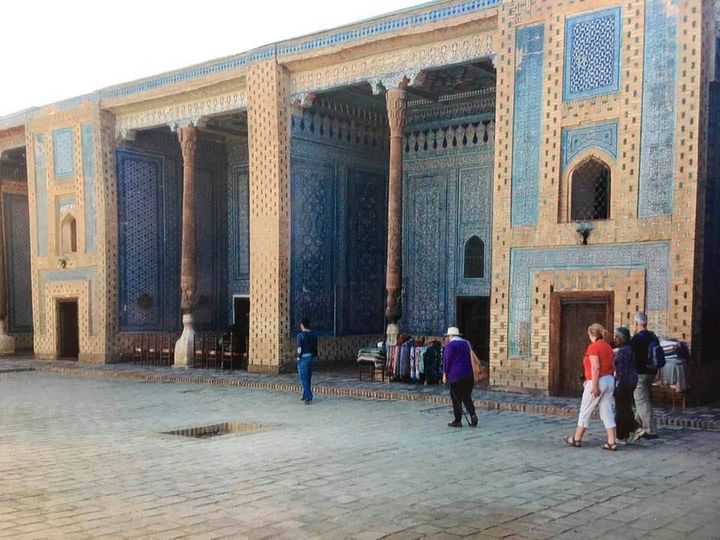
Jama Masjid of Khiva that has wooden roof & pillars of the wood. An amazingly beautiful mosque, its located in old city. The entire mosque has 213 columns of which the oldest one belonged to 10th century while most of them were from 17th century.
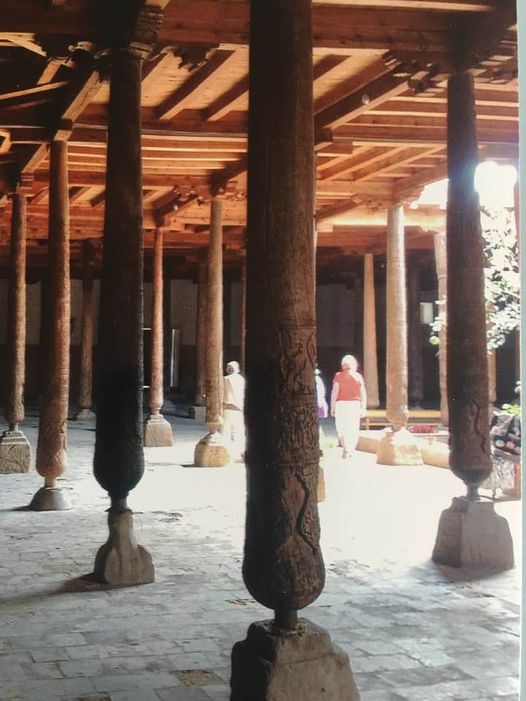
Dr. Mirza Hasan Beg is Scotland based Otorhinolaryngologist who is always passionate to contribute in literary sphere of History & Culture. He had edited & compiled five accounts of Mughal history. He published innumerable number of articles in filed of history, culture & Urdu poetry. From Central Asia to India, he traveled & traced the footsteps of Babar, the first Mughal ruler of India.

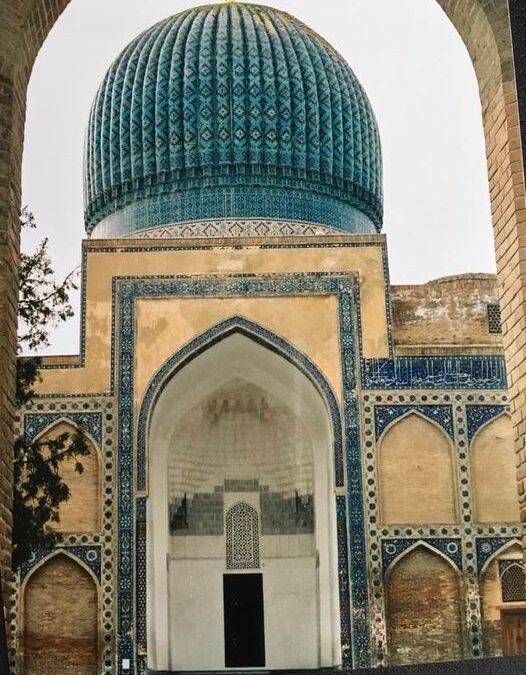
Excellent
Quite an informative article on uzbekistan.
Why was KGB not able to plant there agent in Naqashbandi surprise’s me.
No doubt.
Great contribution, MashaAllah.
Wonderfully put forward all the details of that period. Have to visit Uzbekistan now.